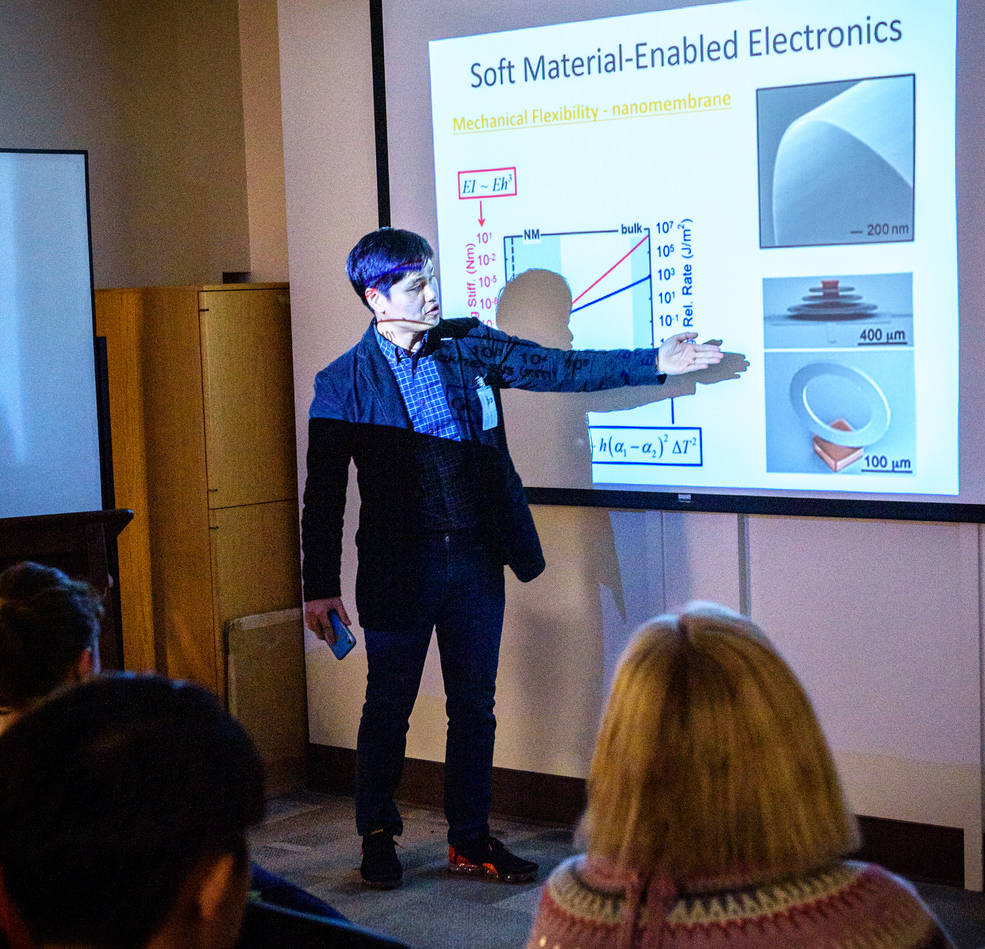February 2020 issue of Ames' newsletter, the Astrogram

Biosciences Collaborative Laboratory Celebrates Opening with Ribbon-Cutting Ceremony
Members of the Ames family were invited to attend the ribbon-cutting ceremony for the Center’s newest facility, the Biosciences Collaborative Laboratory (BCL), building N288, on the morning of Feb. 5. This 40,000 square foot laboratory will bring space biology, astrobiology and bioengineering researchers together to advance the Agency’s strategic goals in both human exploration and science. The building was purposefully designed around laboratory bench space and features an open architectural design intended to facilitate interdisciplinary work. As NASA ramps up its human exploration of deep space and the search for microbial life in the Solar System, scientists in the BCL will provide essential intellectual leadership along the way. The BCL is located at the northeast corner of De France Avenue and Durand Road.
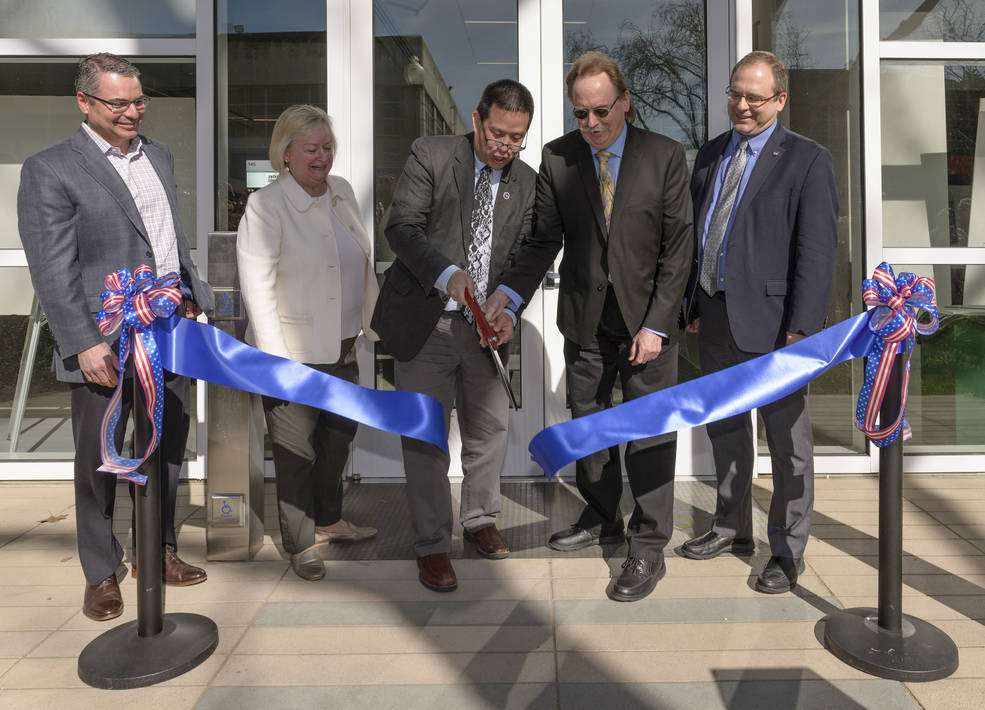
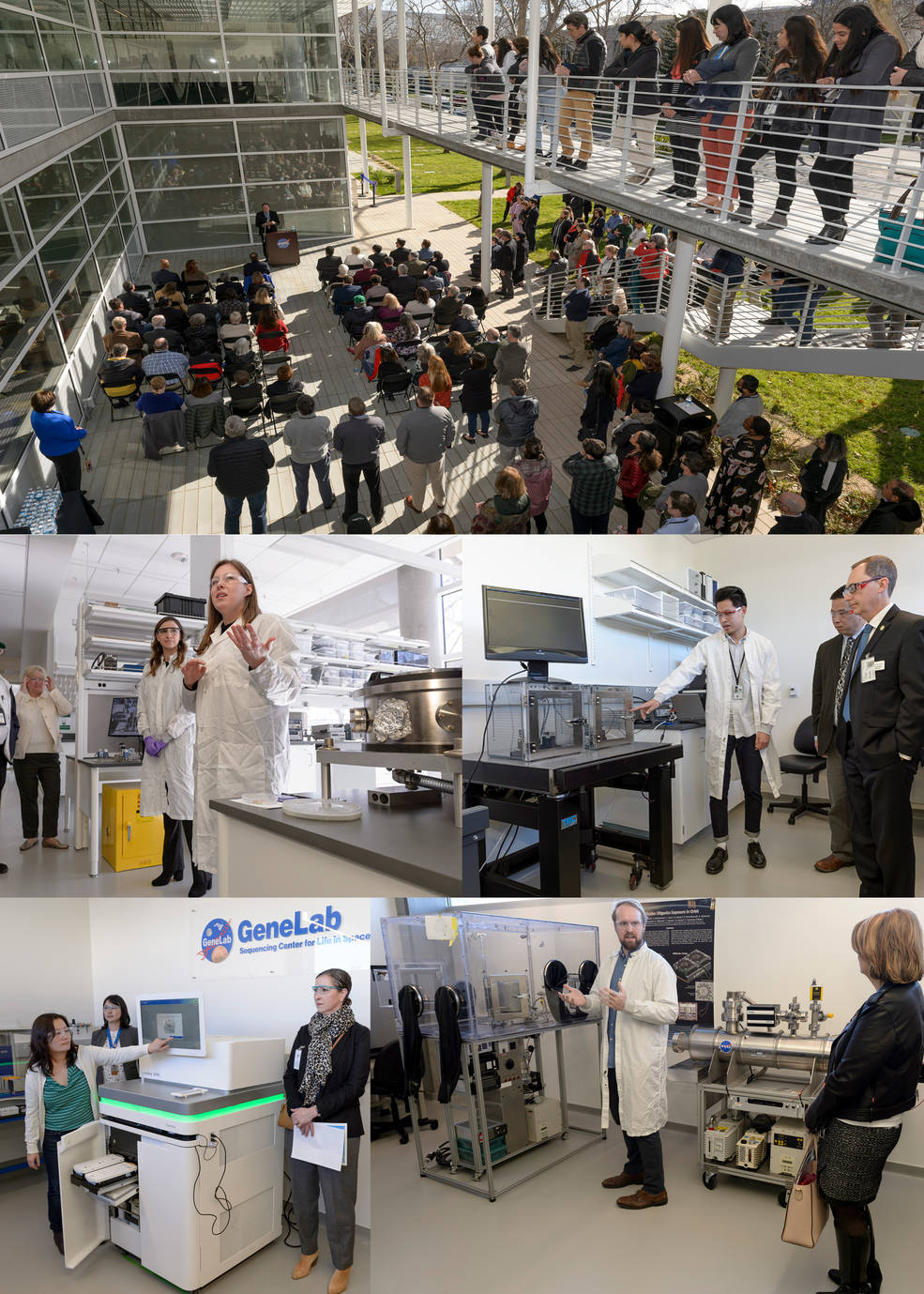
Ames’ Exciting New Lunar Mission, VIPER, Presented at Town Hall
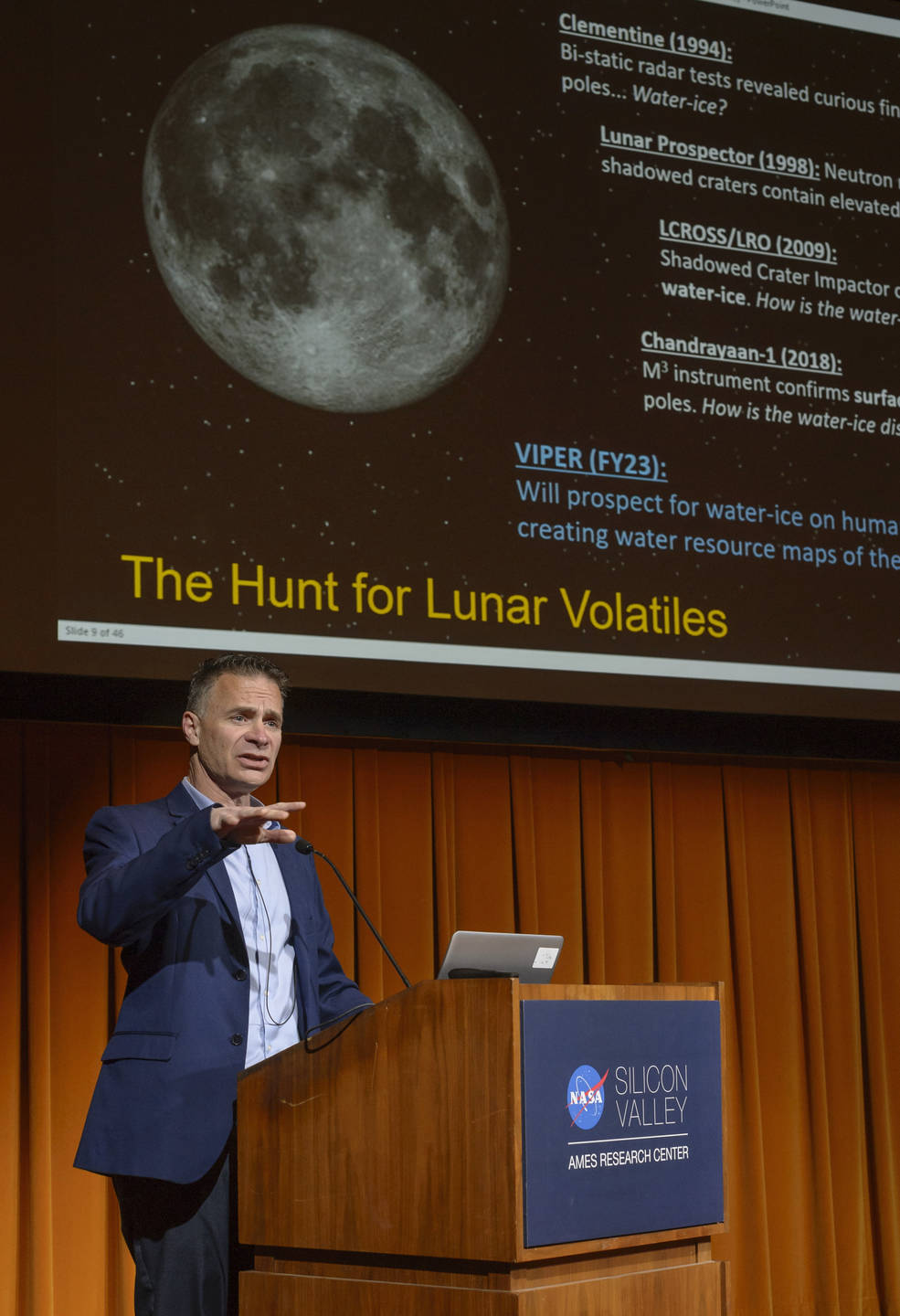
On Feb. 18, 2020, employees were invited to a town hall to learn about Ames’ newest high-profile mission, the lunar science Volatiles Investigating Polar Exploration Rover or VIPER. Ames hosted Steve Clarke, Deputy Associate Administrator for eXploration (DAAX) in the Science Mission Directorate (SMD) at Headquarters; Mark Geyer, Center Director at NASA’s Johnson Space Center; and Lori Glaze, Director of the SMD Planetary Science Division at Headquarters, to share the importance and context of this innovative, new lunar rover mission. Ames’ own Dan Andrews, seen here (above photo) speaking during the town hall, is the VIPER Project Manager. He provided a short overview of the mission followed by a Q&A session with the speakers. The VIPER mission is a mobile robot that will go to the South Pole of the Moon to get a close-up view of the location, distribution and concentration of water ice that could eventually be harvested to sustain human exploration on the Moon, Mars and beyond. VIPER represents the first resource mapping mission on another celestial body. Ames is managing the overall mission, leading the mission’s science, systems engineering, real-time rover surface operations and rover software development. The hardware for the rover is being designed and built by the Johnson Space Center, while the mission instruments are provided by Ames, Kennedy, and commercial partner, Honeybee Robotics. The spacecraft lander and launch vehicle that will deliver VIPER to the surface of the Moon will be provided through NASA’s Commercial Lunar Payload Services (CLPS) contract, delivering science and technology payloads to and near the Moon.
All Hands Provides Center-specific FY2021 Budget Details Following State of NASA Broadcast
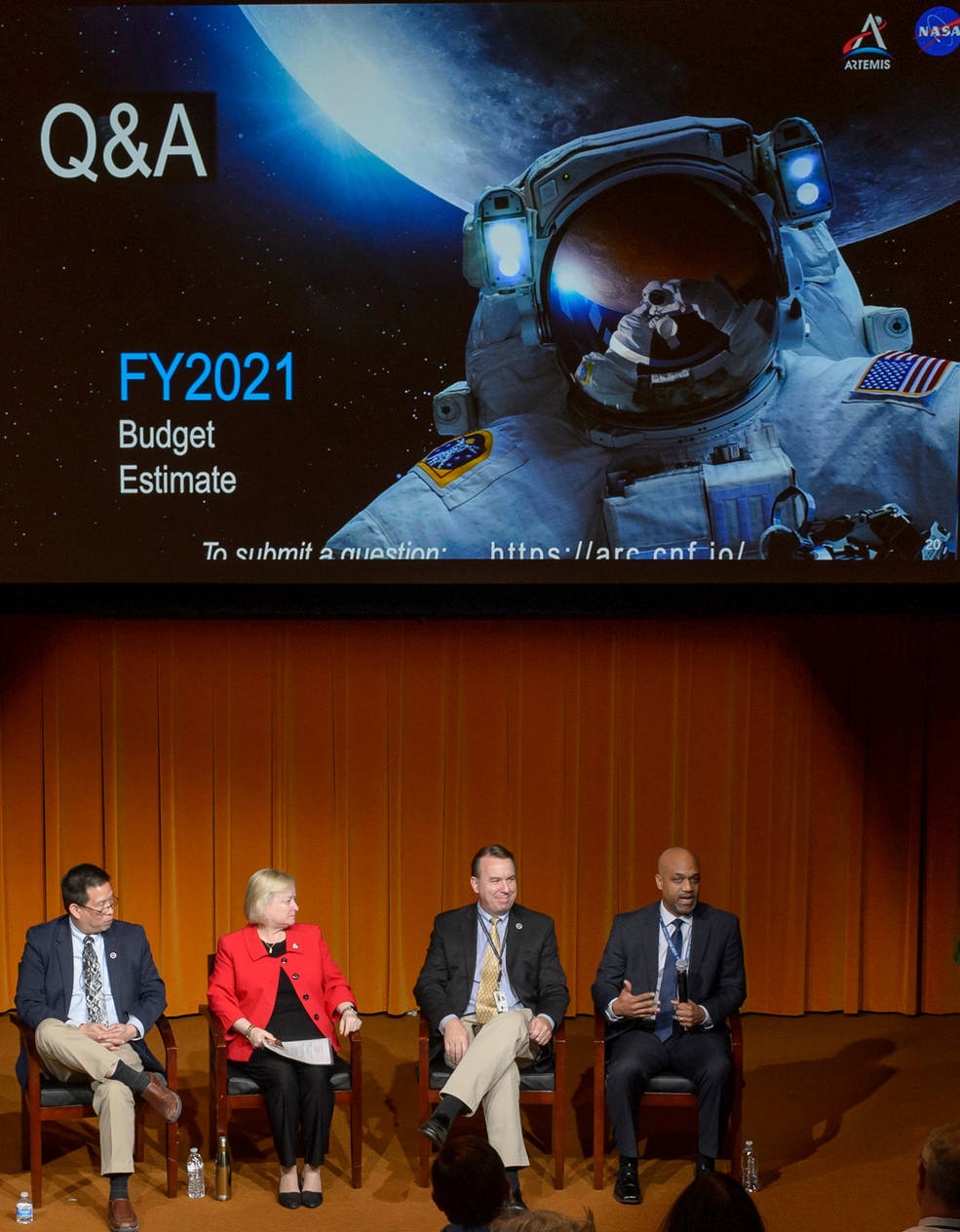
For employees who were unable to view or attend the All-Hands, the presentation slides and recording are available at the following link on InsideAmes at:
https://insideames.arc.nasa.gov/fy2021-budget-all-hands-2-10-2020
This link also is available on InsideAmes, under Special Notices, in the top right-hand corner and in the All- Hands Presentation Archive, along with the pdf version of the slide presentation at:
https://insideames.arc.nasa.gov/all-hands-presentation-archive
Sellars Discusses African Americans and the Vote at Black History Month Celebration
On Feb. 25, 2020, the African-American Advisory Group (AAAG) at Ames welcomed Janet Sellars, Director of Diversity and Data/Analytics at NASA Headquarters, as the keynote speaker to help celebrate Black History Month at the center and talk about the theme, “African Americans and the Vote.”
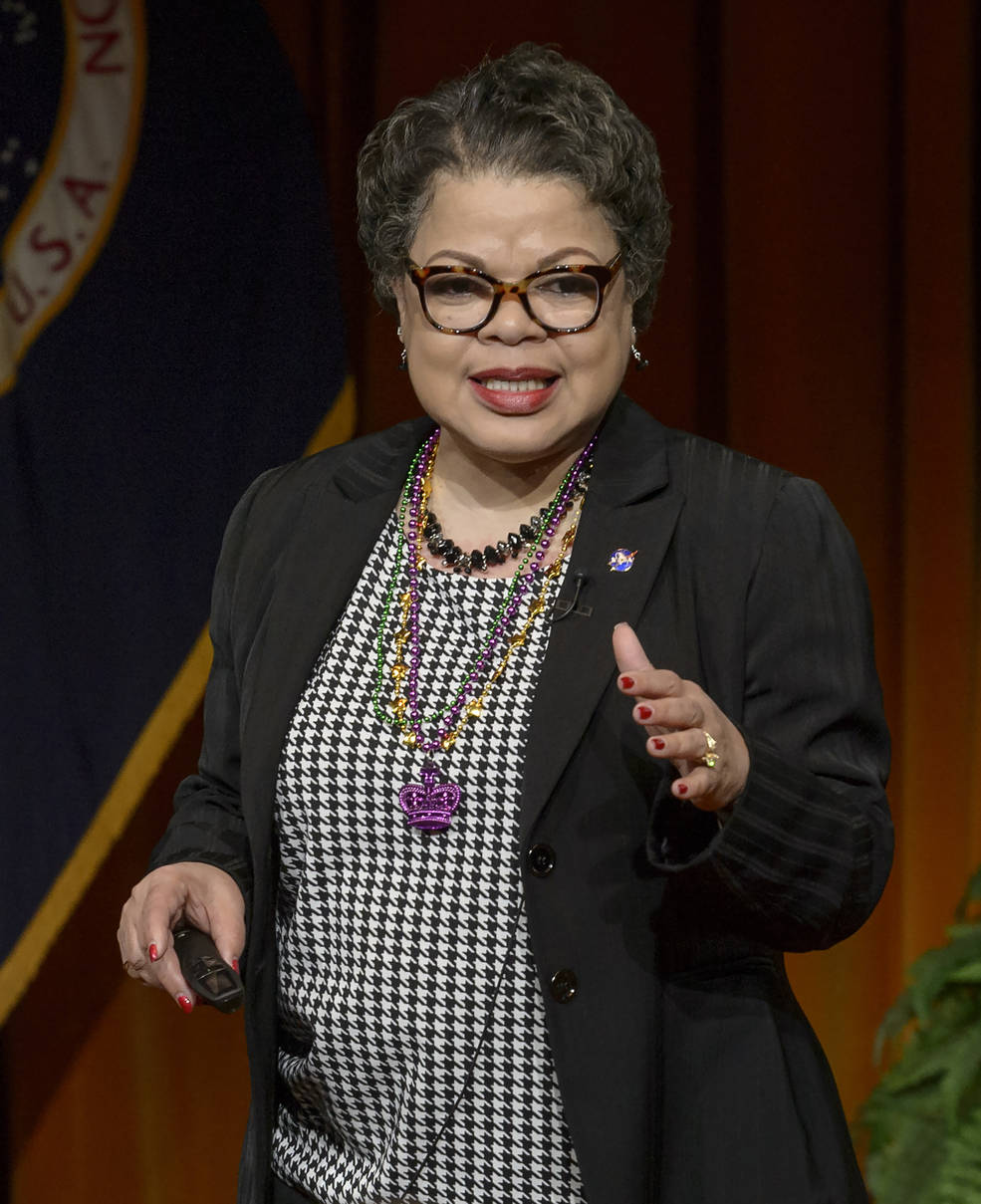
The first of February marks the beginning of Black History Month. It is not only a time when people of African ancestry can come together in memory of their rich past and learn about the many contributions and accomplishments made to our nation’s history, but it allows every American the opportunity to celebrate the traditions of African Americans and those aspects of their own culture and positive contributions made to society.
Black History Month originally began as Negro History Week in 1926. It took place during the second week of February because it coincided with the birthdates of Frederick Douglass and Abraham Lincoln. Harvard-trained historian, Carter G. Woodson, is credited with the creation of Negro History Week. In 1976, the bicentennial of the United States, President Gerald R. Ford expanded the week into a full month. He said, “Our country needed to seize the opportunity to honor the too-often neglected accomplishments of black Americans in every area of endeavor throughout our history.”
Sellars serves as the principal advisor to the NASA Associate Administrator for Diversity and Equal Opportunity on matters concerning the achievement and management of a diverse and inclusive workforce, to include but not limited to, NASA’s diversity and inclusion programs, the Model Agency EEO Plan and Annual Update under the EEOC’s Management Directive 715 and special emphasis programs. Sellars also provides executive direction in the administration of business intelligence tools to inform strategy and solutions for program-related operational goals and objectives to assist NASA in fulfilling its strategic mission and goals.
The talk was hosted by the AAAG and the Office of Diversity and Equal Opportunity (ODEO).
As Workshop Explains, Every Single Person is Critical to the Success of Ames!
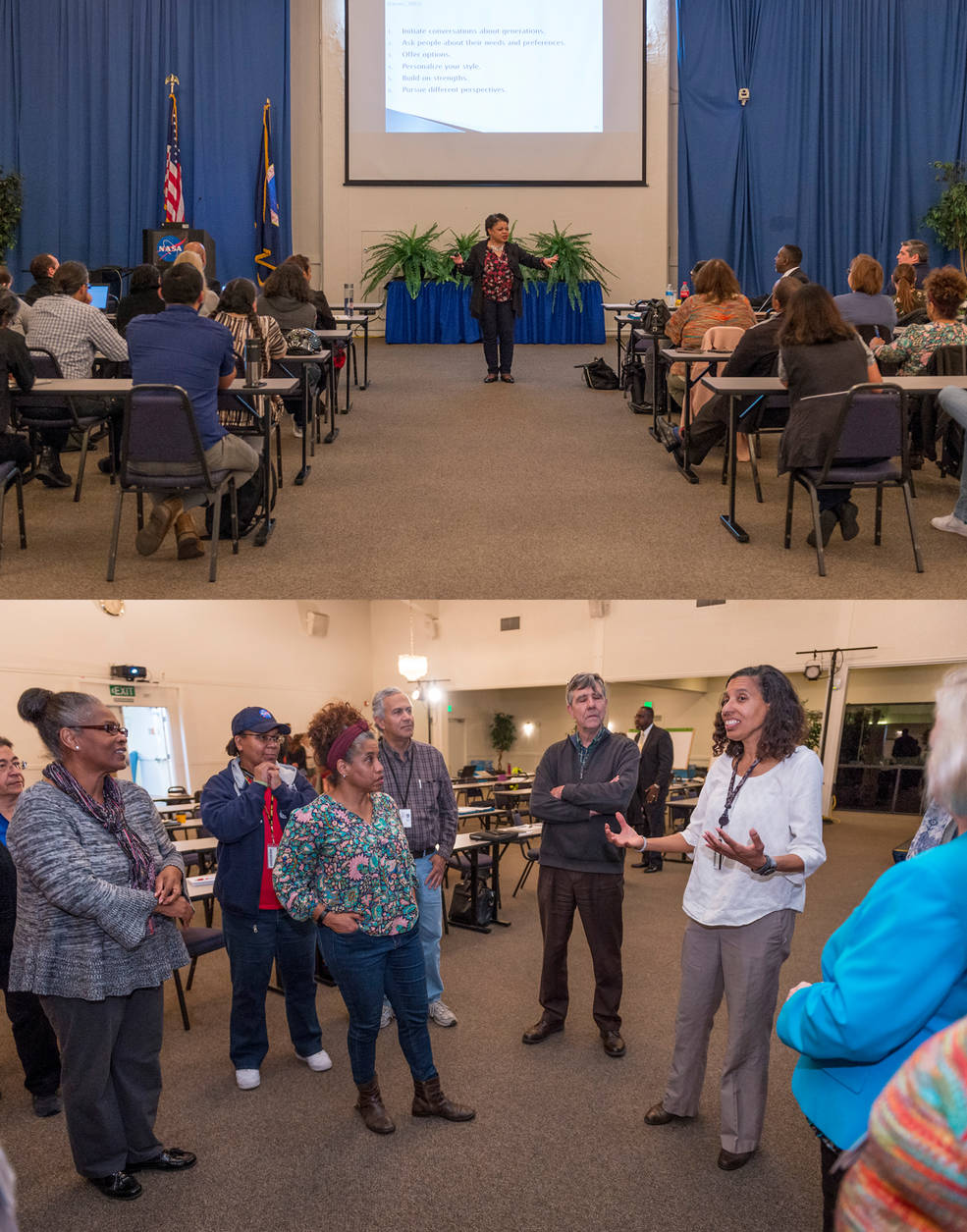
Air Taxi Ride Quality: Seeking a Smooth Ride at the Vertical Motion Simulator
by Abigail Tabor
Four passengers participate in a simulation of an air taxi ride at NASA’s Vertical Motion Simulator, or VMS. Located at NASA Ames, the VMS allows NASA researchers to study the limits of what makes a comfortable air taxi ride. These vehicles will take off vertically – flying from one building to another, for instance – before slowing down to a hover and landing.
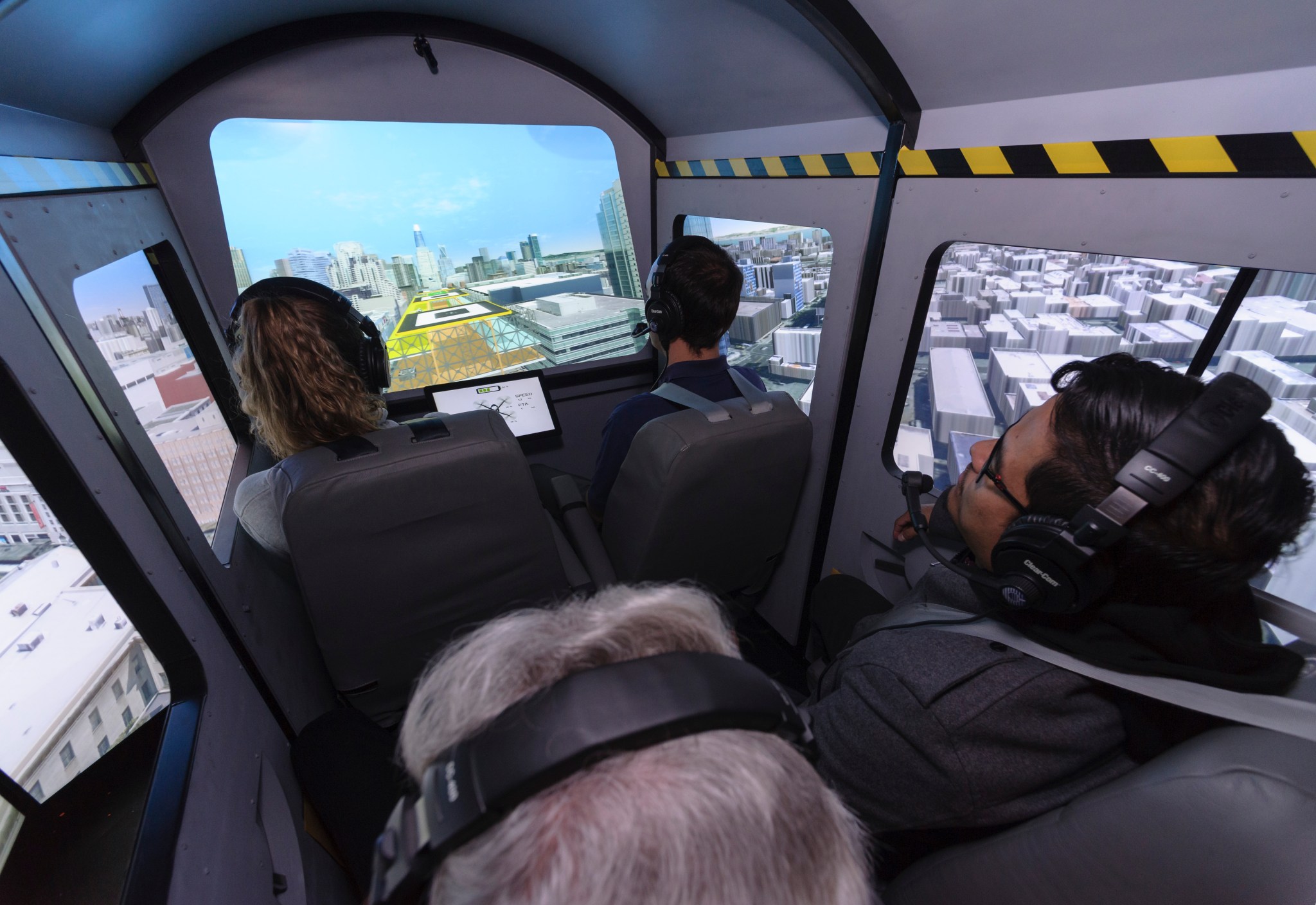
For full story, see: AirTaxiRide
Urban Air Mobility the Topic of Discussion at NASA Tech Talks
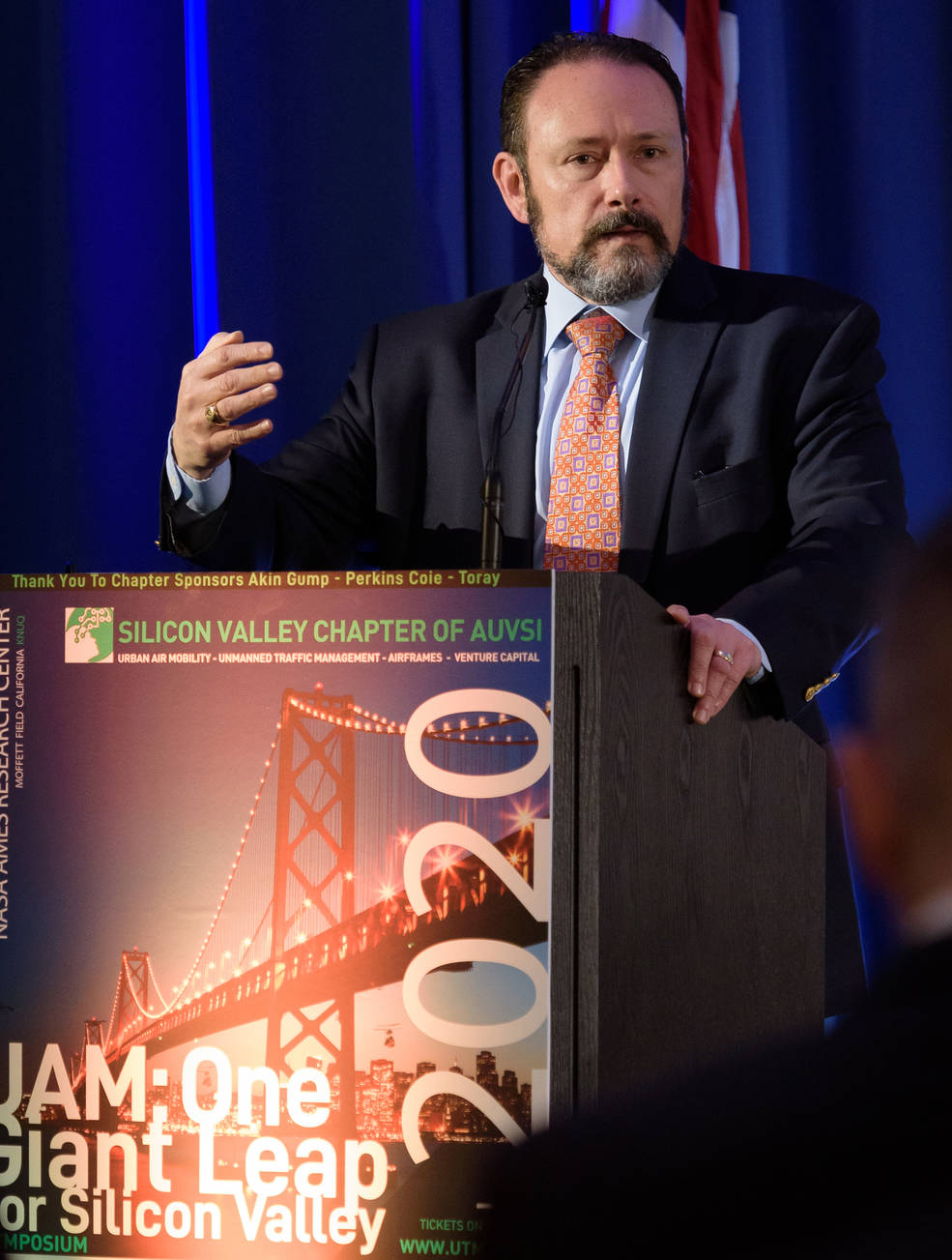
Arrokoth Revealed: A First In-Depth Look at a Pristine World
by Frank Tavares
More than a year ago, the New Horizons spacecraft flew by a strange object at the edge of our solar system. Just a hazy form resembling a snowman on the day of the spacecraft’s closest approach, Arrokoth is now taking shape to be a fascinating and revelatory member of the region of the solar system beyond Neptune’s orbit known as the Kuiper Belt. Untouched by the usual turmoil and impacts of most small objects, this pristinely preserved world could tell us about the earliest years of our solar system’s formation.
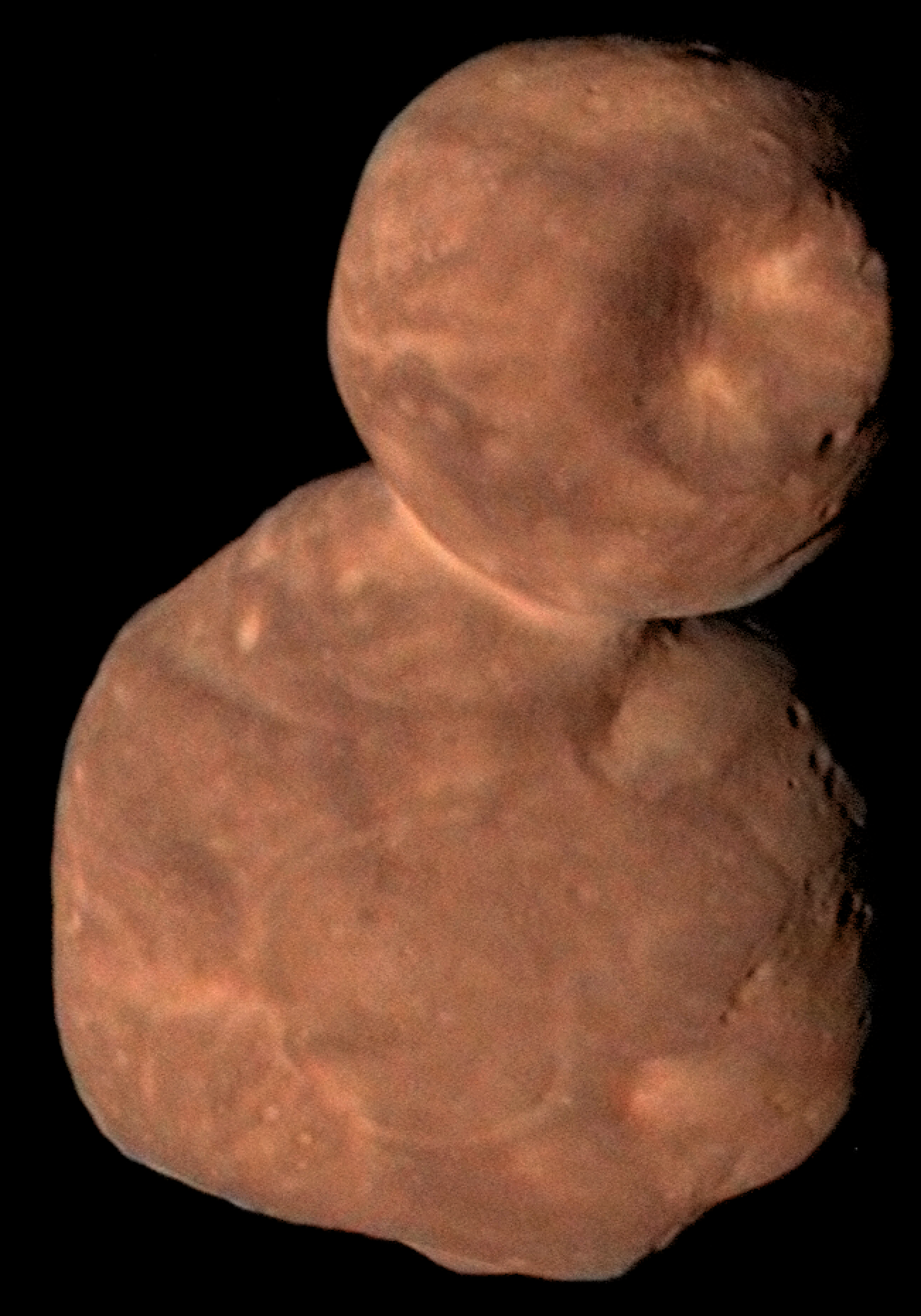
New research published in a seriesofpapers in Science begins to reveal Arrokoth’s mysteries, including its formation, geography, composition, various basic properties and more. Scientists from NASA Ames worked alongside researchers from across the world to provide a comprehensive first look at this object.
For full store, see: ArrokothFirstLook
What is AzTechSat-1?
by Abigail Tabor
The launch of one very small spacecraft marks a big success for the first collaboration between NASA and the Mexican Space Agency on a spaceflight project. It’s also important for the team of students in Mexico who designed and built the satellite. Called AzTechSat-1, it will demonstrate satellite-to-satellite communications for applications in space and on Earth. Specifically, it will “talk to” a network of telecommunications satellites already orbiting the Earth and contribute new data about this transmission strategy to developers of small satellites called CubeSats.
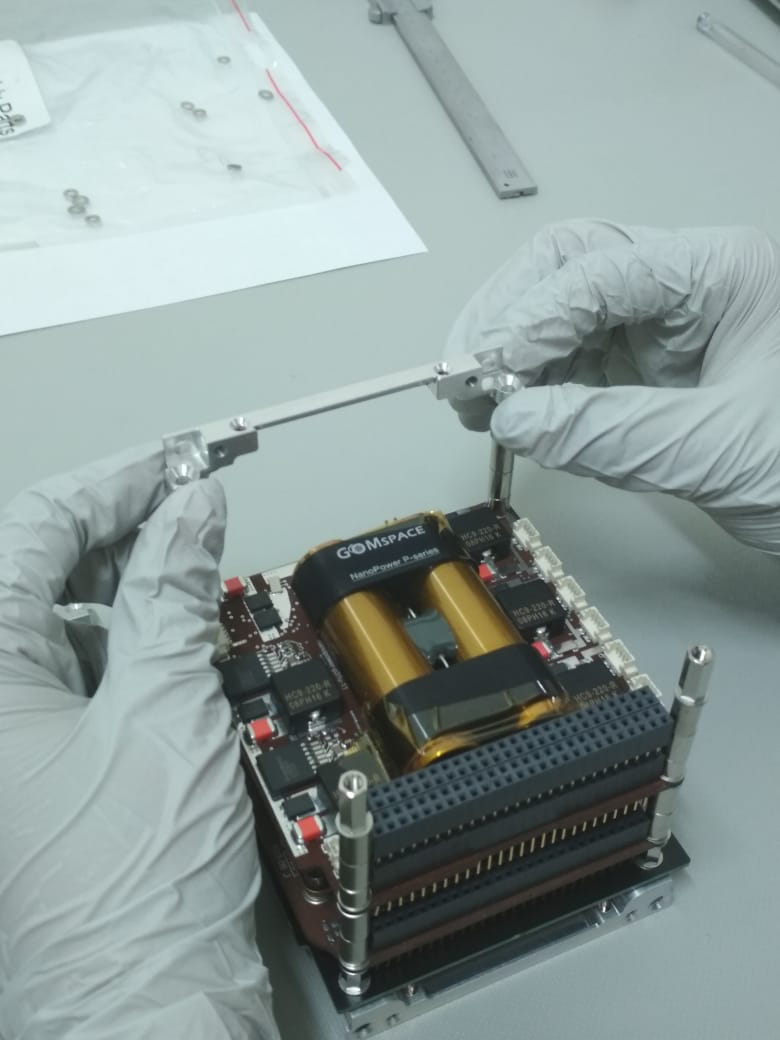
For full story, see: AzTechSat-1
STEM Diversity at the Ames Exploration Encounter
by James Gbetrah and Mona Lisa Sharp
The San Francisco Islamic and River Glen Elementary Schools visited the Ames Exploration Encounter (AEE) in celebration of Diversity Week on Feb. 4, 2020 and Feb. 6, 2020. Both groups participated and engaged in the AEE’s unique educational program, where the content is designed to provide authentic NASA STEM engagement. Each group cultivated talent across the social spectrum, including students from backgrounds that are traditionally underrepresented. As each student approaches work and problem solving differently, students experienced and connected to the material, bringing new perspectives needed to promote innovation.
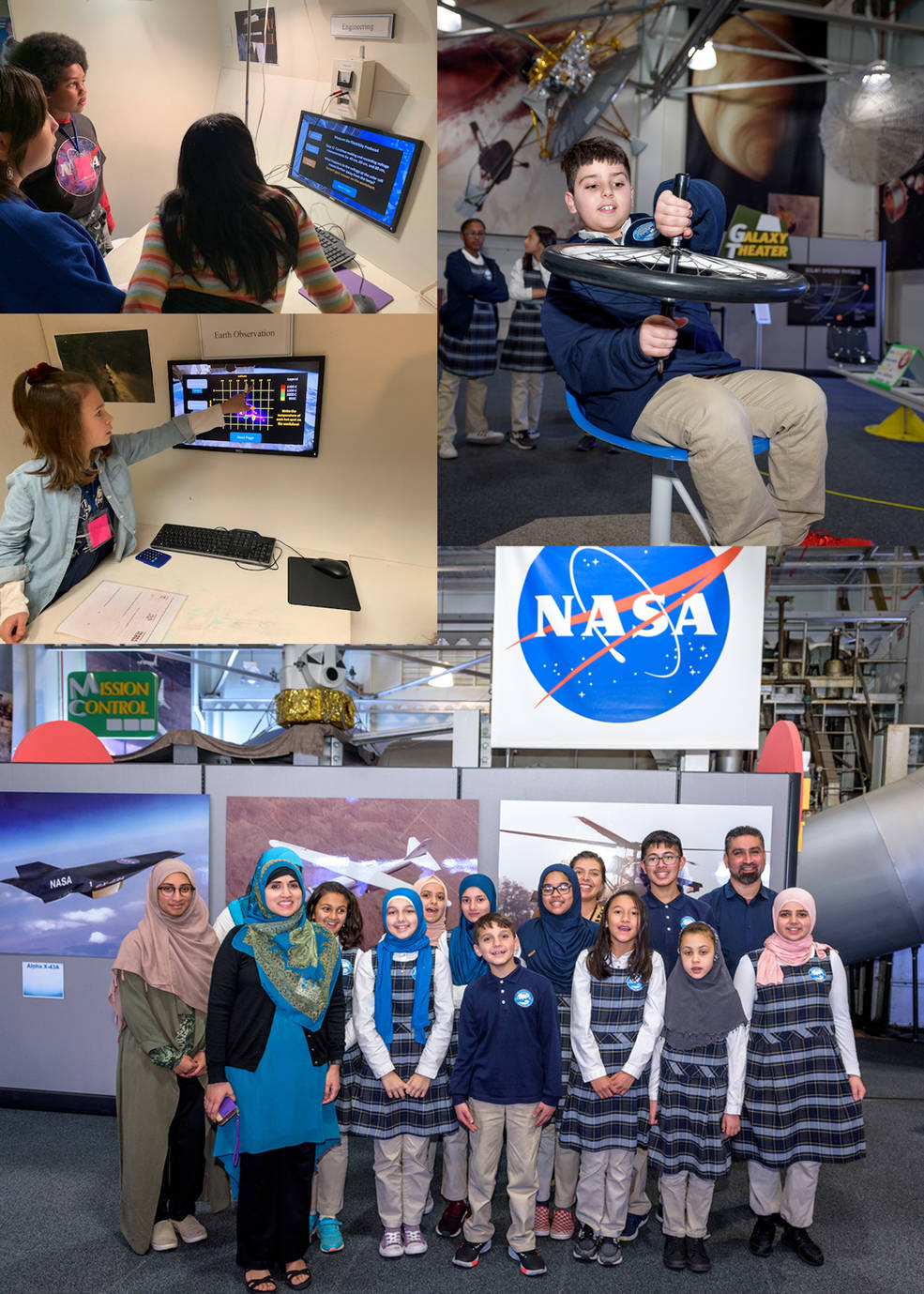
Diversity Week at AEE focuses on enhancing STEM engagement through direct involvement, promoting problem-solving skills and a diverse future. Highlights presented to the students included physics (orbital mechanics, angular momentum and gyroscopic motion). Here, students encountered the orbiting effect of the path of a spacecraft and its destination celestial object, through the orbital chair. As we approach the dawn of the 20th anniversary of the International Space Station (ISS), students took on the roles as mission specialists and astronauts in the mock ISS, where students collaborated to problem solve through experiments such as remote sensing. Both groups wrapped up with a few questions about their experience and new-found knowledge at the AEE.
Quotes from two of the visiting teachers:
The administration from the San Francisco Islamic School aims to help their K-8th grade students thrive as strong Muslim individuals and leading contributors to society, we’re looking forward to, “linking what their students have learned to science lessons.” – Rabia Afzal, teacher.
The staff from River Glen Elementary focus on implementing a two-way bilingual immersion model, while developing positive multicultural understanding, found their experience to be “very engaging and fun. There were enough interactive and hands-on activities embedded with information. Great combination!” – Lorena Campbell, teacher
Yeo Discusses Bioelectronics for Healthcare and Human-Machine Interfaces
The NASA Academic Mission Services (NAMS) Innovation Labs Program hosted a brown-bag seminar in late January 2020 for employees to learn about new research in soft bioelectronics for healthcare and human-machine interfaces. The talk, “Soft Bioelectronics for Healthcare and Human-Machine Interfaces,” was presented by biomedical engineer Dr. W. Hong Yeo. He is an assistant professor in the George W. Woodruff School of Mechanical Engineering and Wallace H. Coulter Department of Biomedical Engineering at Georgia Institute of Technology.
